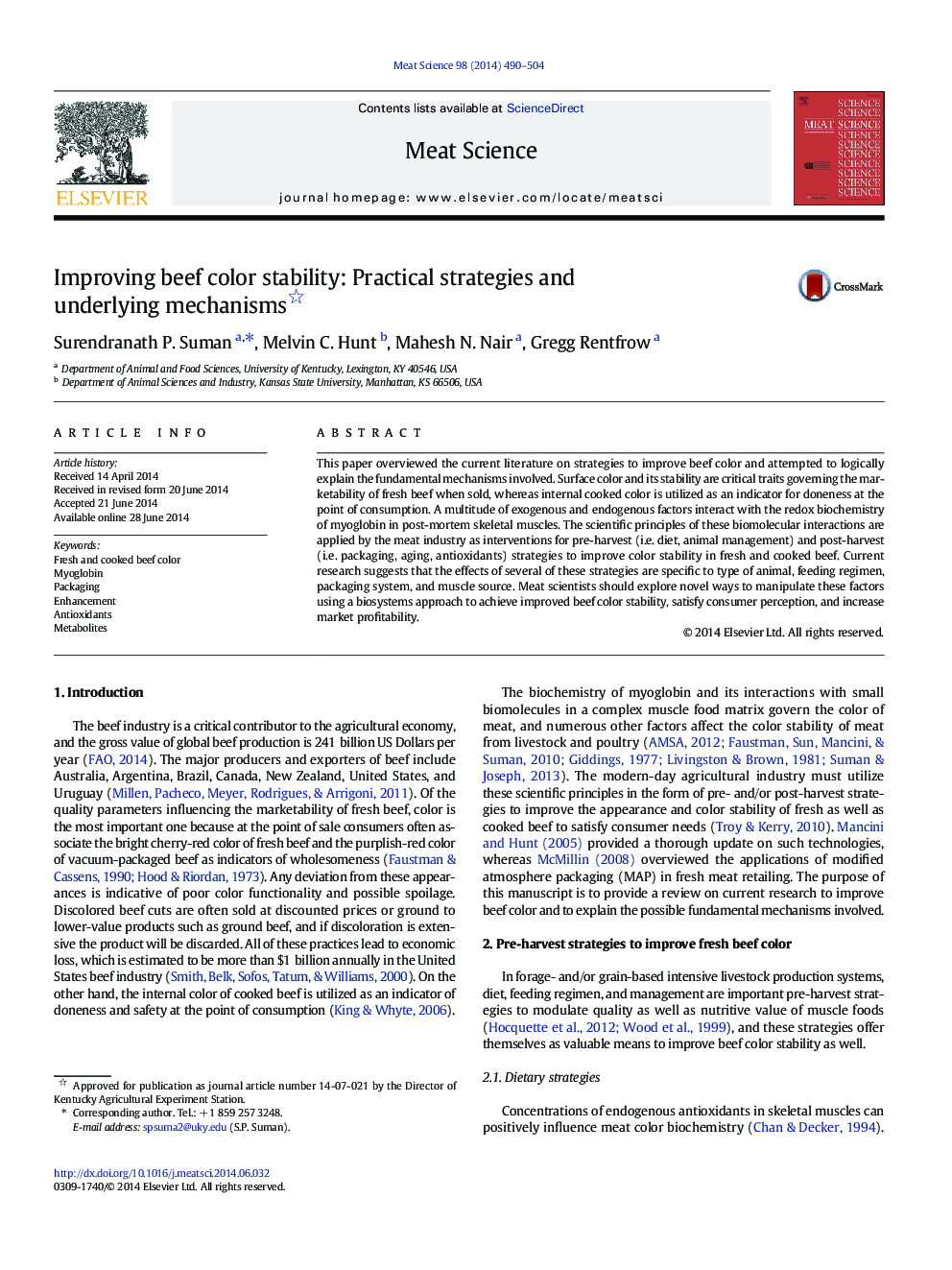| کد مقاله | کد نشریه | سال انتشار | مقاله انگلیسی | نسخه تمام متن |
|---|---|---|---|---|
| 5791358 | 1109606 | 2014 | 15 صفحه PDF | دانلود رایگان |

- Fresh beef color governs consumer purchase decisions.
- Diet, management, animal type, and zilpaterol modulate beef color stability.
- Packaging, enhancement, muscle type, and aging influence color attributes of beef.
- Mitochondria play a critical role in color biochemistry of post-mortem muscles.
- Internal cooked color is not a reliable indicator for beef safety.
This paper overviewed the current literature on strategies to improve beef color and attempted to logically explain the fundamental mechanisms involved. Surface color and its stability are critical traits governing the marketability of fresh beef when sold, whereas internal cooked color is utilized as an indicator for doneness at the point of consumption. A multitude of exogenous and endogenous factors interact with the redox biochemistry of myoglobin in post-mortem skeletal muscles. The scientific principles of these biomolecular interactions are applied by the meat industry as interventions for pre-harvest (i.e. diet, animal management) and post-harvest (i.e. packaging, aging, antioxidants) strategies to improve color stability in fresh and cooked beef. Current research suggests that the effects of several of these strategies are specific to type of animal, feeding regimen, packaging system, and muscle source. Meat scientists should explore novel ways to manipulate these factors using a biosystems approach to achieve improved beef color stability, satisfy consumer perception, and increase market profitability.
Journal: Meat Science - Volume 98, Issue 3, November 2014, Pages 490-504